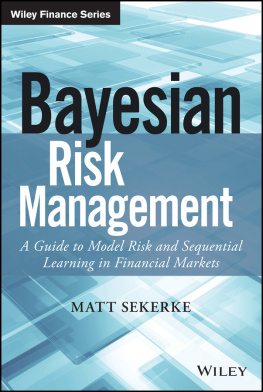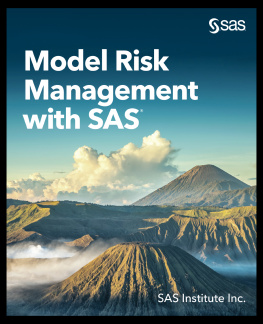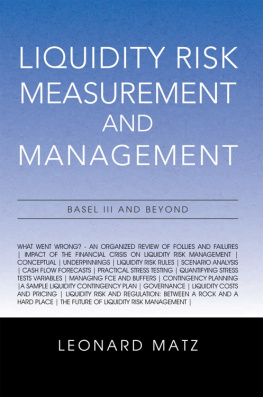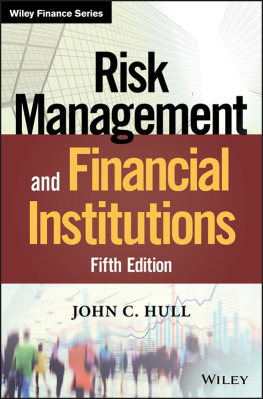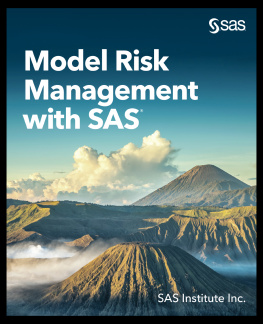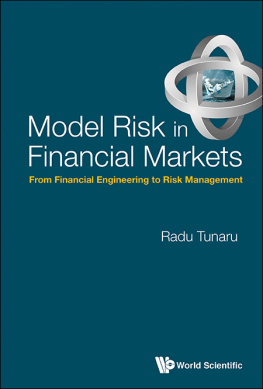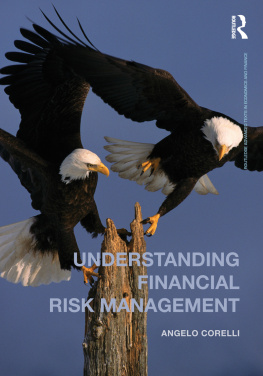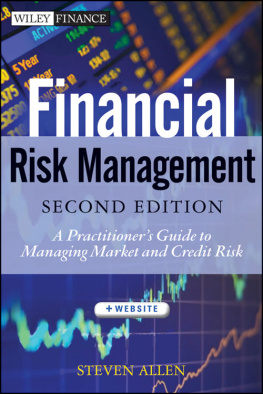
The Wiley Finance series contains books written specifically for finance and investment professionals as well as sophisticated individual investors and their financial advisors. Book topics range from portfolio management to e-commerce, risk management, financial engineering, valuation and financial instrument analysis, as well as much more. For a list of available titles, visit our website at www.WileyFinance.com.
Founded in 1807, John Wiley & Sons is the oldest independent publishing company in the United States. With offices in North America, Europe, Australia and Asia, Wiley is globally committed to developing and marketing print and electronic products and services for our customers' professional and personal knowledge and understanding.
Copyright 2015 by Matt Sekerke. All rights reserved.
Published by John Wiley & Sons, Inc., Hoboken, New Jersey.
Published simultaneously in Canada.
No part of this publication may be reproduced, stored in a retrieval system, or transmitted in any form or by any means, electronic, mechanical, photocopying, recording, scanning, or otherwise, except as permitted under Section 107 or 108 of the 1976 United States Copyright Act, without either the prior written permission of the Publisher, or authorization through payment of the appropriate per-copy fee to the Copyright Clearance Center, Inc., 222 Rosewood Drive, Danvers, MA 01923, (978) 750-8400, fax (978) 646-8600, or on the Web at www.copyright.com. Requests to the Publisher for permission should be addressed to the Permissions Department, John Wiley & Sons, Inc., 111 River Street, Hoboken, NJ 07030, (201) 748-6011, fax (201) 748-6008, or online at http://www.wiley.com/go/permissions.
Limit of Liability/Disclaimer of Warranty: While the publisher and author have used their best efforts in preparing this book, they make no representations or warranties with respect to the accuracy or completeness of the contents of this book and specifically disclaim any implied warranties of merchantability or fitness for a particular purpose. No warranty may be created or extended by sales representatives or written sales materials. The advice and strategies contained herein may not be suitable for your situation. You should consult with a professional where appropriate. Neither the publisher nor author shall be liable for any loss of profit or any other commercial damages, including but not limited to special, incidental, consequential, or other damages.
For general information on our other products and services or for technical support, please contact our Customer Care Department within the United States at (800) 762-2974, outside the United States at (317) 572-3993 or fax (317) 572-4002.
Wiley publishes in a variety of print and electronic formats and by print-on-demand. Some material included with standard print versions of this book may not be included in e-books or in print-on-demand. If this book refers to media such as a CD or DVD that is not included in the version you purchased, you may download this material at http://booksupport.wiley.com. For more information about Wiley products, visit www.wiley.com.
Library of Congress Cataloging-in-Publication Data:
Sekerke, Matt.
Bayesian risk management : a guide to model risk and sequential learning in financial markets / Matt Sekerke.
pages cm. (The Wiley finance series)
Includes bibliographical references and index.
ISBN 978-1-118-70860-6 (cloth) ISBN 978-1-118-74745-2 (epdf) ISBN 978-1-118-74750-6 (epub)
1. FinanceMathematical models. 2. Financial risk managementMathematical models. 3. Bayesian statistical decision
theory. I. Title.
HG106.S45 2015
332.041501519542dc23
2015013791
Cover Design: Wiley
Cover Image: Abstract background iStock.com/matdesign24
Preface
Most financial risk models assume that the future will look like the past. They don't have to. This book sketches a more flexible risk-modeling approach that more fully recognizes our uncertainty about the future.
Uncertainty about the future stems from our limited ability to specify risk models, estimate their parameters from data, and be assured of the continuity between today's markets and tomorrow's markets. Ignoring any of these dimensions of model risk creates an illusion of mastery and fosters erroneous decision making. It is typical for financial firms to ignore all of these sources of uncertainty. Because they measure too little risk, they take on too much risk.
The core concern of this book is to present and justify alternative tools to measure financial risk without assuming that time-invariant stochastic processes drive financial phenomena. Discarding time-invariance as a modeling assumption makes uncertainty about parameters, models, and forecasts accessible and irreducible in a way that standard statistical risk measurements do not. The constructive alternative offered here under the slogan Bayesian Risk Management is an online sequential Bayesian modeling framework that acknowledges all of these sources of uncertainty, without giving up the structure afforded by parametric risk models and asset-pricing models.
Following an introductory chapter on the far-reaching consequences of the time-invariance assumption, addresses uncertainty about models and shows how candidate models may be compared to one another. Particular focus is given to the relationship between prior information and model complexity, and the manner in which model uncertainty applies to asset-pricing models.
then develop the fundamental tools of sequential Bayesian time series analysis: dynamic linear models and sequential Monte Carlo (SMC) models. Each of these tools incorporates parameter uncertainty, model uncertainty, and information decay into an online filtering framework, enabling real-time learning about financial market conditions.
especially, I discuss how other common models may be reformulated and estimated using the same sequential Bayesian toolkit.
, synthesizes the results of the first three parts and begins the transition from a risk measurement framework based on Bayesian principles to a properly Bayesian risk management. I argue that the sequential Bayesian framework offers a coherent mechanism for organizational learning in environments characterized by incomplete information. Bayesian models allow senior management to make clear statements of risk policy and test elements of strategy against market outcomes in a direct and rigorous way. One may wish to begin reading at the final chapter: A glimpse of the endgame could provide useful orientation while reading the rest of the text.
The genesis of this book is multifold. As an undergraduate student in economics, I was impressed by the divide between the information-processing capacity assumed for individuals and firms in economic theory and the manner in which empirical individuals and firms actually learn. While economics provided many powerful results for the ultimate market outcomes, the field had less to say about the process by which equilibria were reached, or the dynamic stability of equilibrium given large perturbations from fixed points. Given a disruption to the economy, it seemed as though economic agents would have to find their way back to equilibrium over time, and on the basis of incomplete and uncertain information. With the notable exception of Fisher (1983) and some works by the Austrian economists, I quickly discovered that the field furnished few ready answers.
As I began my career consulting in economic litigations, I had two further experiences that find their theme in this book. The first involved litigation over a long-term purchase contract, which included a clause for renegotiation in the event that a structural change in the subject market had occurred. In working to find econometric evidence for such a structural change, I was struck, on the one hand, by the dearth of methods for identifying structural change in a market as it happened; identification seemed to be possible mainly as a forensic exercise, though there were obvious reasons why a firm would want to identify structural change in real time. On the other hand, after applying the available methods to the data, it seemed that it was more likely than not to find structural change wherever one looked, particularly in financial time series data at daily frequency. If structural change could occur at any time, without the knowledge of those who have vested interests in knowing, the usual methods of constructing forecasts with classical time series models seemed disastrously prone to missing the most important events in a market. Worse, their inadequacy would not become evident until it was probably too late.
Next page
